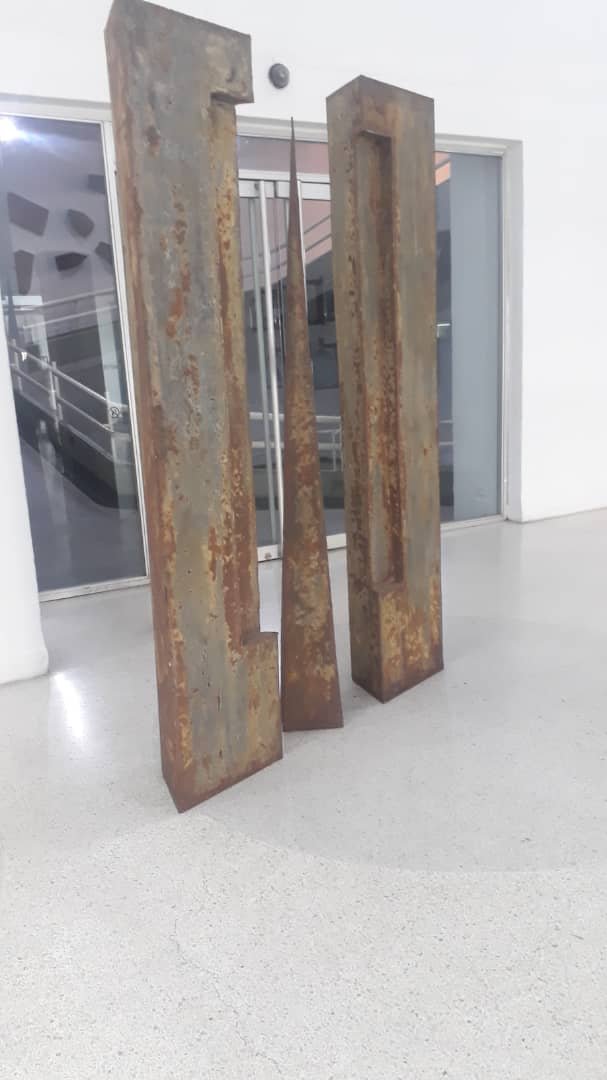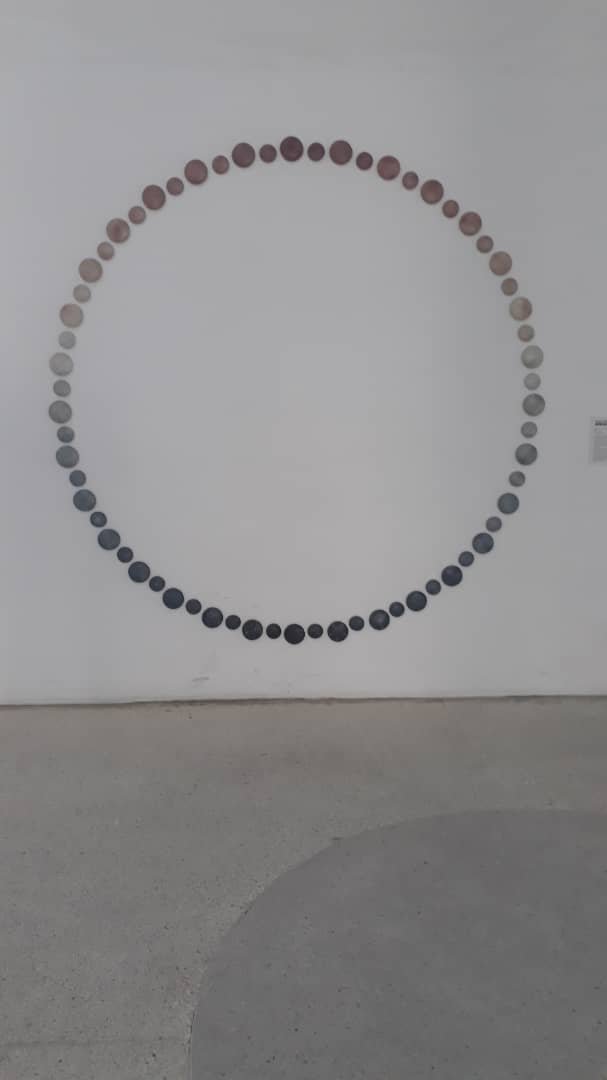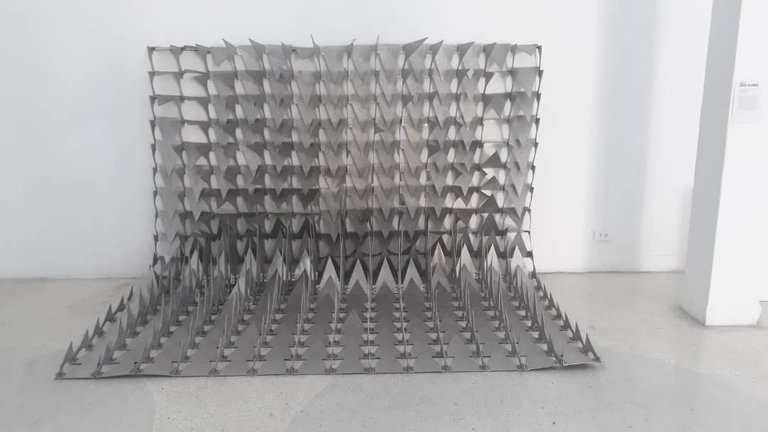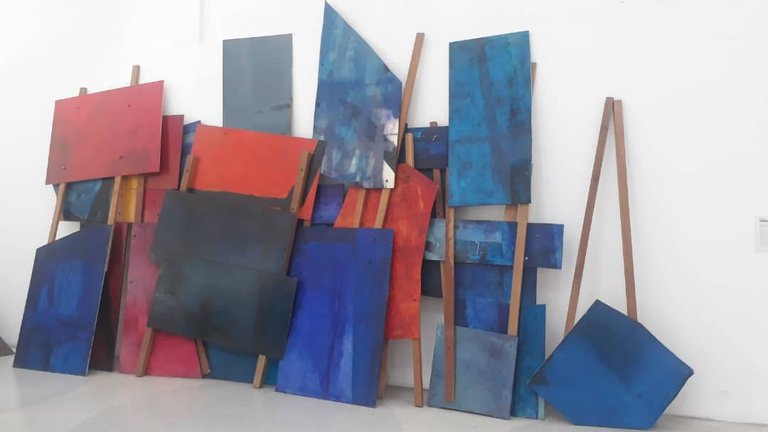

PHOTO: Archivo personal
ENGLISH
A few days ago I visited an exhibition in the art museum of my city, called Entremuros, its title pays homage to works of women artists in Venezuela, from the mid-twentieth century, in large format and with very heavy materials.
If you dig a little into the history of these artists, you will find that many are families of migrants, and that they have in common having been women with certain social and economic position, whose situation in a way gave them an advantage to study and access the art scene.
In Venezuela throughout the twentieth century the participation of women in the field of the arts is not the same in relation to men. In general terms, I summarize all this history by saying that it was in 1945 when women who could read and write were able to vote for the first time, otherwise they were dedicated to human care tasks. For this reason, women of a certain social position could dispense with these tasks and dedicate themselves to study or develop a trade.
The most interesting thing these women have in common are the materials they worked with and the dimensions of their works. These are the artists: Raquel Zoco Alonso, Enriqueta Ahrensburg, Mercedes Gonzalez, Ingrid Lozano, Anja Nowackc, their works are sculptures in large format with materials such as steel, iron, glass, wood using techniques such as alloys, cast, among others.
For example, the mechanical tapestry of Raquel Zoco Alonso is an assembly made of aluminum with dimensions 300x200x100cm. It consists of metallic elements interlocking with each other that when they come together lead the viewer to capture a continuous movement and look at multiple arrangements of their forms.
The same happens with Enriqueta Ahrensburg's work Construcciones pictóricas in situ (Pictorial constructions in situ), which consists of wooden elements irregularly arranged and intervened with oil paint, whose order establishes a harmony between shapes and color. These constructions put us in dialogue with the constructions of ancient civilizations, where the line of the drawing suggests the trace of man on this plane.
It is interesting to look at the relationship of the context in which these works were made, considering that being women artists they were able to challenge the plastic language making use of new unconventional supports to the art made by women in the country at the time.
ESPANISH
Hace unos días visité una exposición en el museo de arte de mi ciudad, lleva por nombre Entremuros, su titulo hace homenaje a obras de mujeres artistas en Venezuela, de mediados del siglo XX , en gran formato y con materiales muy pesados.
Si indagas un poco en la historia de estas artistas, encontraras que muchas son familias de migrantes, y que tienen en común haber sido unas mujeres con cierta posición social y económica, cuya situación en cierta forma les dio ventaja para poder estudiar y acceder al escenario del arte.
En Venezuela a lo largo del siglo XX la participación de las mujeres en el campo de las artes, no es la misma en relación a los hombres. En líneas generales, resumo toda esta historia diciendo que fue en 1945 cuando las mujeres que sabían leer y escribir pudieron votar por primera vez, de resto estaban dedicadas a tareas del cuidado humano. Por tal razón, las mujeres de cierta posición social podían prescindir de estas tareas y dedicarse a estudiar o desarrollar un oficio.
Lo más interesante que tienen en común estas mujeres son los materiales con los que trabajaron y las dimensiones de sus obras. Se trata de las artistas: Raquel Zoco Alonso, Enriqueta Ahrensburg, Mercedes González, Ingrid Lozano, Anja Nowackc, sus obras son esculturas en gran formato con materiales como el acero, el hierro, vidrio, la madera haciendo uso de técnicas como aleaciones, fundido, entre otras.
Por ejemplo el tapiz mecánico de Raquel Zoco Alonso un ensamblaje hecho en aluminio de dimensiones 300x200x100cm. Se trata de elementos metálicos engranados entre si que al confluir llevan al espectador a captar un movimiento continuo y mirar múltiples disposiciones de sus formas.

PHOTO: archivo personal
Lo mismo ocurre con la obra de Enriqueta Ahrensburg Construcciones pictóricas in situ, se trata de elementos en madera dispuestos irregularmente e intervenidos con óleo cuyo orden establece una armonía entre las formas y el color. Estas construcciones nos ponen en diálogo con las construcciones de civilizaciones antiguas, donde la línea del dibujo sugiere el rastro del hombre en este plano.

PHOTO: archivo personal
Es interesante mirar la relación del contexto en el que fueron hechas estas obras, considerando que siendo artistas mujeres fueron capaces de desafiar el lenguaje plástico haciendo usos de nuevos soportes no convencionales al arte hecho por mujeres en el país para la época.
Me encanta 😍 dónde queda este museo? Es interesante la historia
el antiguo ateneo de Valencia
Excelente, casualidad voy en camino hoy para allá 🤗❤️ quedaron hermosa.
Congratulations @vielsiarias! You have completed the following achievement on the Hive blockchain And have been rewarded with New badge(s)
Your next target is to reach 400 upvotes.
You can view your badges on your board and compare yourself to others in the Ranking
If you no longer want to receive notifications, reply to this comment with the word
STOPTo support your work, I also upvoted your post!
Check out our last posts:
Espero ir pronto. Gracias por la recomendación.
How great, in museums we can find incredible things 😊
museums are wonderful places where you can meet interesting people and their view of the world, thanks for your comment
@tipu curate 2
Upvoted 👌 (Mana: 11/71) Liquid rewards.